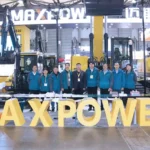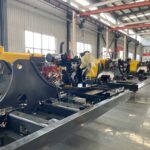Introduction
A forestry dozer, also known as a crawler dozer, is an invaluable piece of heavy equipment used in logging and forestry management. Equipped with a front-mounted wide blade, forestry dozers excel at land clearing, building roads and trails, moving felled trees, and doing finish work. If you oversee forestry operations, there are several key things you should do to maximize the usefulness of your forestry dozer.
Learn The Capabilities And Limitations

The first thing you should do with any new forestry dozer is take time to thoroughly learn its capabilities and limitations. Large forestry dozers typically range from 100 to 750 horsepower with operating weights from 20,000 to 100,000 pounds. The more you know about what a particular model can and cannot do based on its size, ground pressure, blade type, and other features, the better you will be able to match it with appropriate tasks. This table compares some key specs between small, medium and large forestry dozers:
| Size Class | Horsepower Range | Operating Weight Range | Ground Pressure | Ideal Tasks |
|---|---|---|---|---|
| Small | 100-200 hp | 20,000-40,000 lb | 4-8 psi | Light land clearing, small roads/trails, moving small logs |
| Medium | 200-400 hp | 40,000-60,000 lb | 8-12 psi | Land clearing, road building, moving logs |
| Large | 400-750 hp | 60,000-100,000 lb | 12-20 psi | Heavy land clearing, main roads, moving large logs |
As you can see, properly matching machine size to the intended application is crucial. Over-working a small dozer or under-working a large one results in wasted productivity and efficiency.
Inspect And Maintain Rigorously
The second thing you must do is inspect and maintain your forestry dozer rigorously. These machines operate in extremely demanding conditions, negotiating rough terrain, highly abrasive dirt and debris, challenging slopes, impacts with trees and stumps, and more. Establish thorough pre-operation inspection procedures to check for leaks, damage, worn parts, under-inflated tires, and clogged air filters. Follow the manufacturer’s maintenance schedule diligently when it comes to oil and filter changes, lubrication, belt/hose replacement, and more. Investing the time and money up front to keep your dozer in prime working condition will maximize uptime and extend the machine’s service life significantly.
Train Operators Properly
Even the highest quality forestry dozer will fail to live up to its potential if operators are not trained properly. Dozer operation requires considerable skill and precision. Operators need both general heavy equipment operation training as well as specialized instruction tailored to forestry dozers. They need to fully understand how to prepare and clear land, construct stable roads and trails, avoid rollovers and other accidents, use blades and rippers properly, and transport felled trees efficiently. Arrange for both classroom and hands-on training to ensure operators utilize correct techniques for your specific forestry dozer models.
Use Technology To Enhance Productivity
While a skilled dozer operator remains essential, you can boost productivity further by utilizing various technology aids:
- GPS guidance systems – Many forestry dozers now integrate GPS and surveying technology to guide operators in cutting precisely graded roads, clearing defined tracts of land, and repeating tasks more accurately. This also aids with compliance for contracts requiring very specific dimensions and boundaries.
- Monitoring/telemetry systems – Onboard monitoring systems can transmit real-time machine data to the supervisor including production rates, fuel consumption, engine health, maintenance alerts, and location. This allows better planning and quicker response if anything needs attention.
- Blade force monitoring – Specialized sensors can monitor blade loads and notify operators if they exceed recommended limits that may cause track slippage or machine damage. This prevents overworking the equipment.
While implementing some of these technologies requires upfront investment, they typically pay for themselves rather quickly in the form of increased production, lower downtime, reduced wear-and-tear, and better record-keeping.
Use Attachments And Accessories

Don’t limit yourself to just the factory basic dozer. A variety of attachments and accessories are available that can save vast amounts of labor by adapting your machine to specialized tasks. Common examples include:
- Ripper – helps break up densely compacted soil or root balls
- Stump grinder – grinds away stumps flush to the surface
- Tree pusher – modified blade for gathering many trees efficiently
- Winch – anchors machine to roots/stumps for leverage
- Guarding packages – protects cab from brush and debris
- Fire suppression – water tanks and sprinkers for fire safety
Evaluating your common forestry dozer applications and investing in one or more targeted attachments can really optimize your operations.
Employ Sound Business Practices
The final key thing you must do is employ sound business practices in your forestry dozer operation. At upwards of $300,000+ for a new large dozer, these machines represent major business investments. You need to calculate costs carefully, set appropriate rates for services provided, establish contracts clearly defining scope of work, secure appropriate insurance, manage cash flow properly, and handle taxes/accounting transparently. Working with a reputable equipment dealer, accountant, and business attorney from the start helps set your dozer business on solid ground. This keeps the finances viable for covering your substantial equipment investments long term.
Conclusion:Forestry Dozer
Forestry dozers are complex, expensive equipment that can provide outstanding productivity when utilized properly. Make sure to learn all about your particular dozer’s capabilities, maintain it rigorously, train operators thoroughly, take advantage of modern technology, use attachments as needed, and employ good business practices. Following these seven key recommendations will help ensure your dozer delivers the productivity and profitability your forestry business requires. Please reach out with any other questions!
FAQ
Q: What size forestry dozer is best for land clearing and road building on 30-60 acre parcels?
A: A medium sized dozer in the 200-400 horsepower range with an operating weight from 40,000-60,000 lbs would be ideal. This provides enough power and stability for substantial land clearing and roadway work while still maintaining reasonable transportation requirements and costs.
Q: Should I buy a used forestry dozer to save on costs?
A: This can be smart economically, but only if the prior usage and maintenance is thoroughly documented. Repairs and downtime on a used dozer with unknown history could eliminate any savings versus buying new or certified refurbished. Inspect used machines extremely closely before purchasing.
Q: Are forestry dozers equipped with any creature comforts, or are they noisy, bumpy rides?
A: Comfort has improved a lot in modern forestry dozers. Things like sound insulation, vibration dampening cab mounts, high back air suspension seats, and climate controlled cabs make long days of dozing much more comfortable for operators. Test drive any dozer you’re considering to personally assess comfort.






-150x150.webp)
